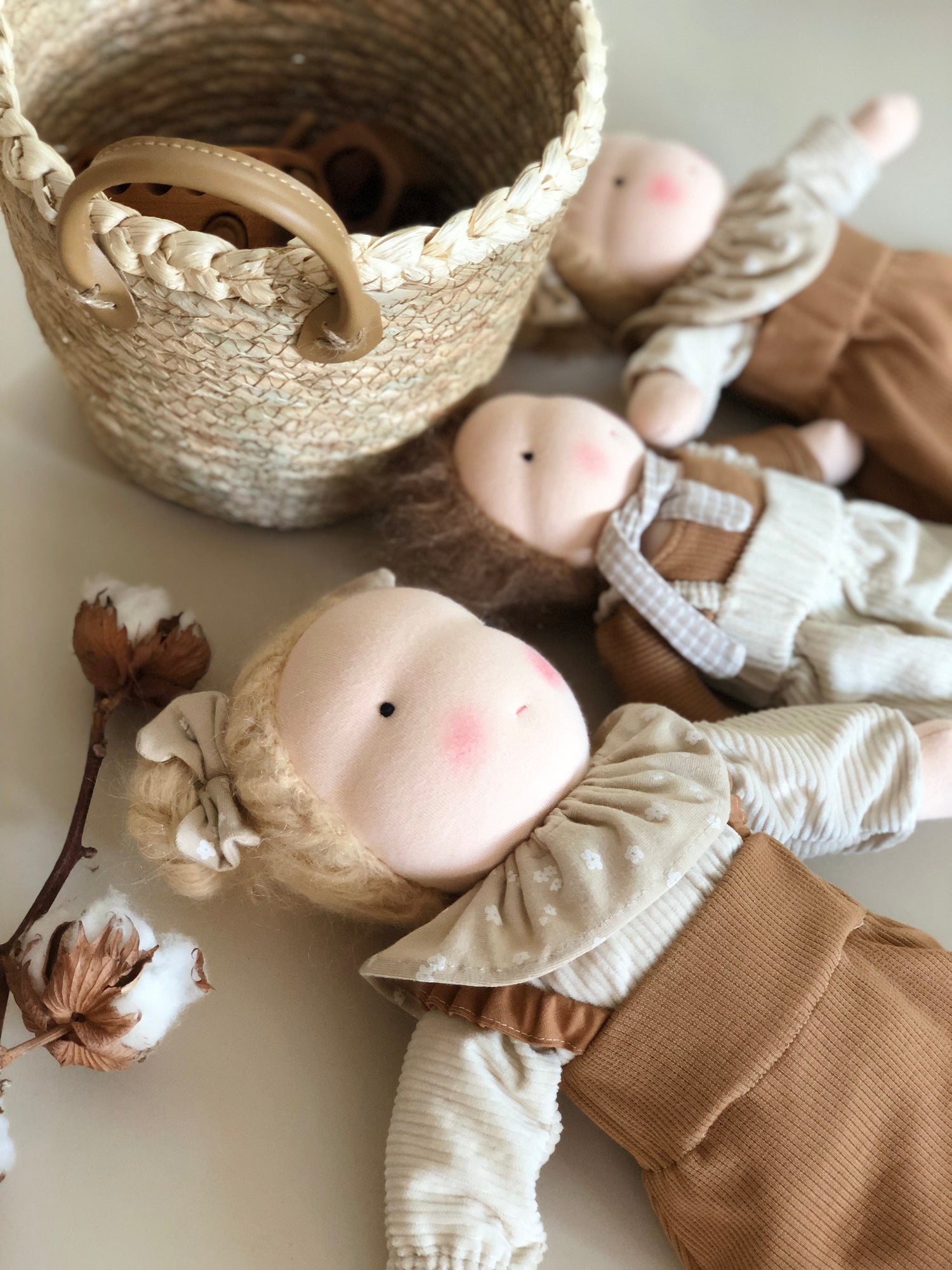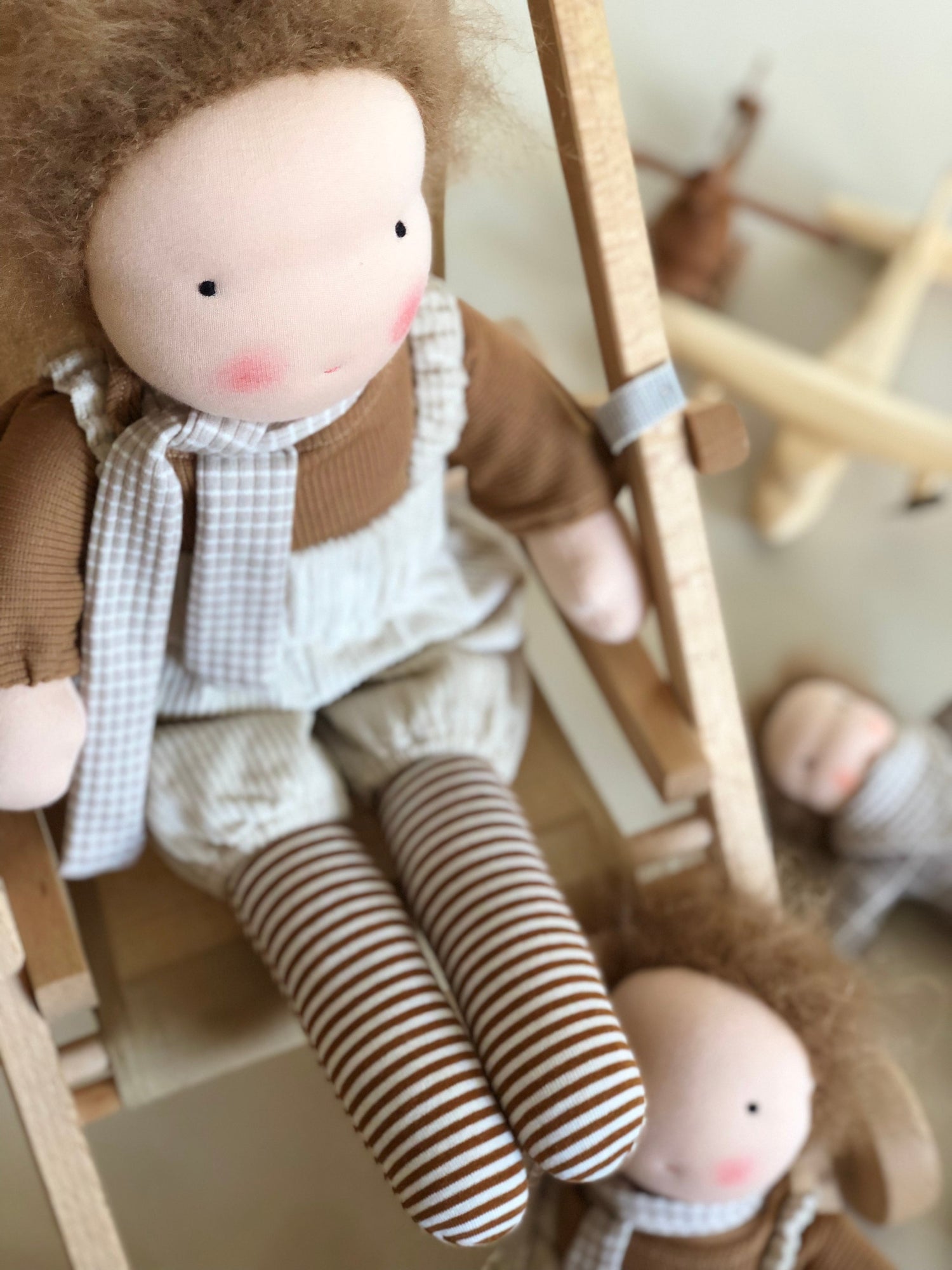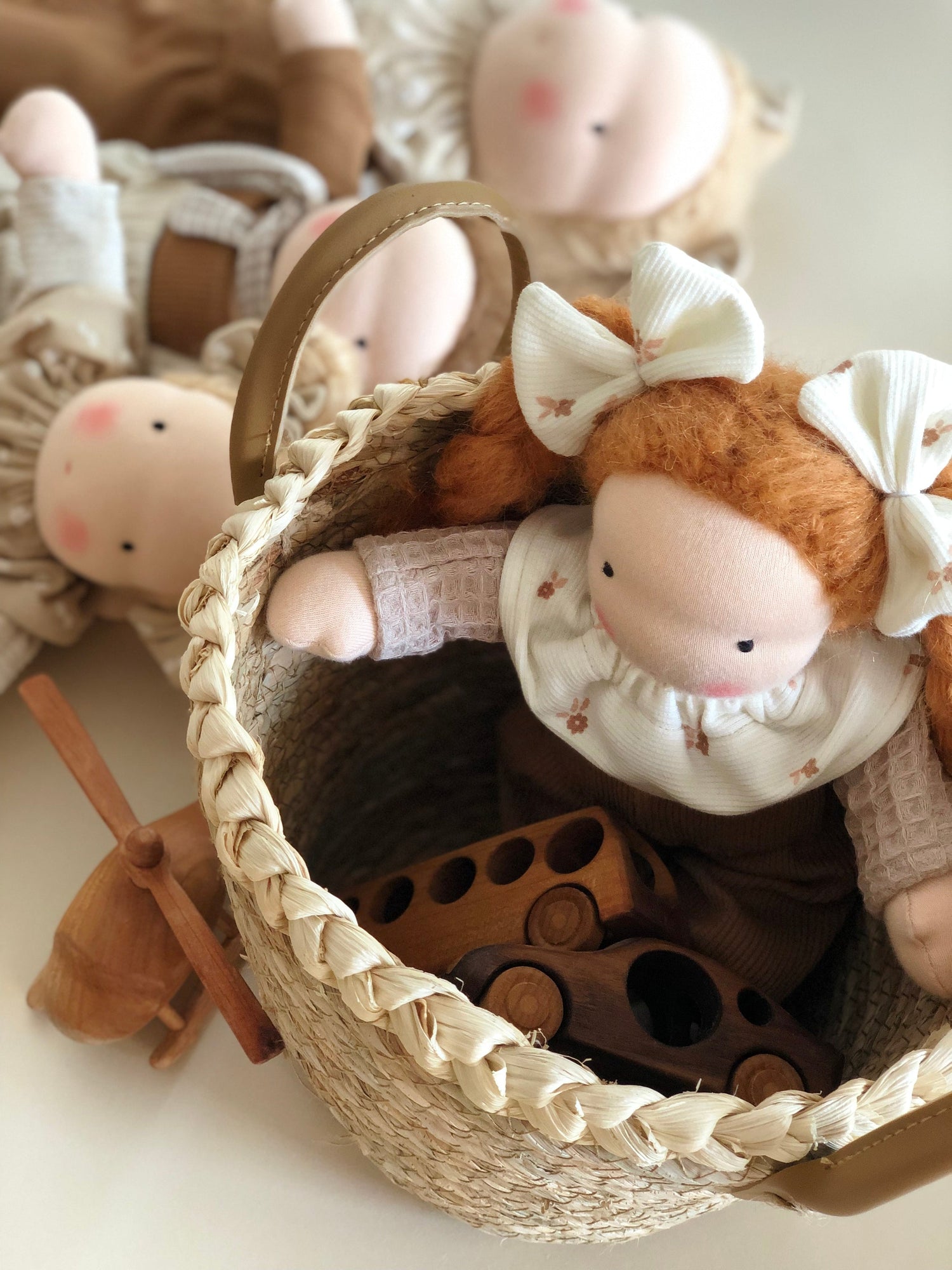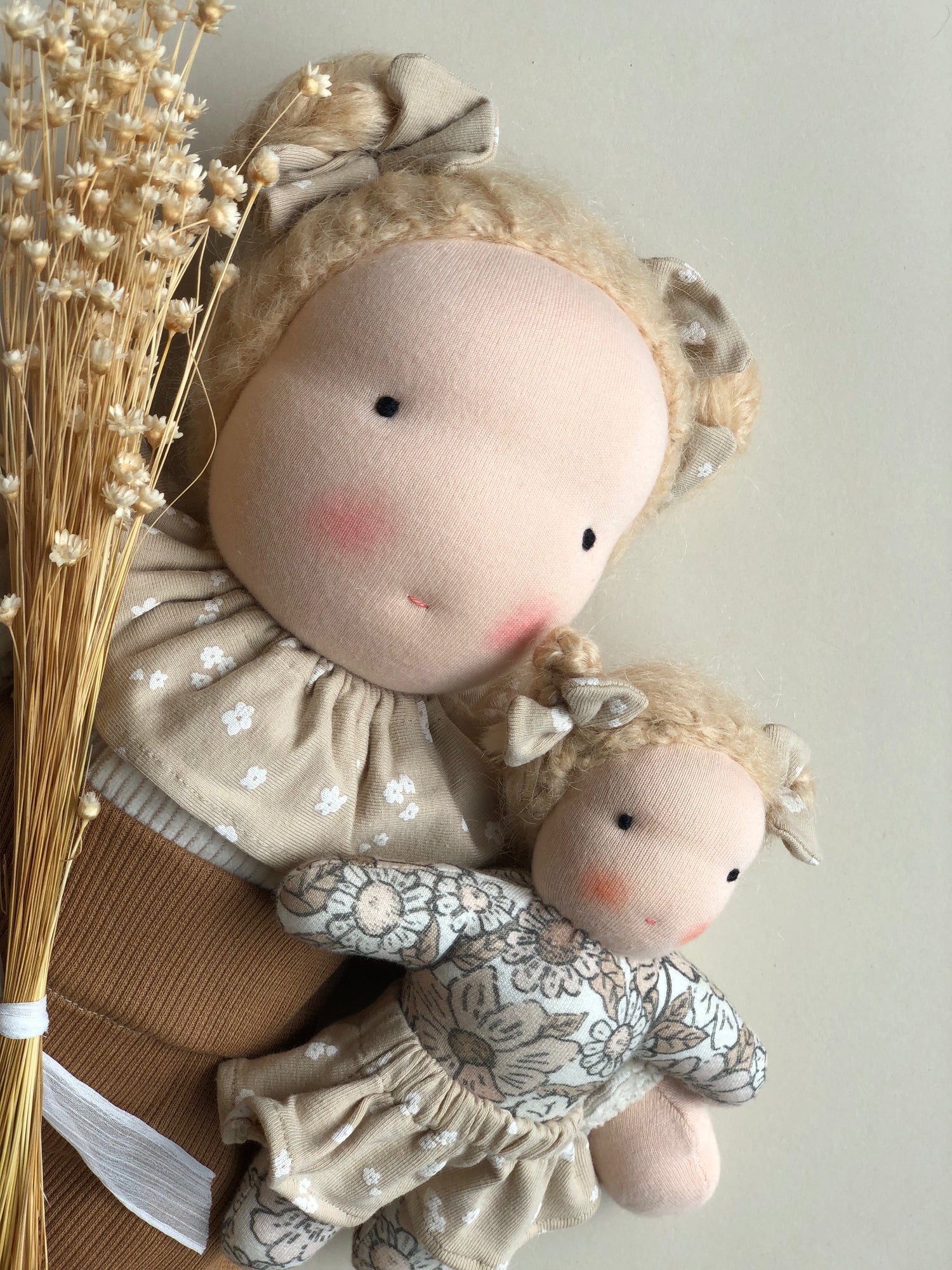Rudolf Steiner
“Our highest endeavour must be to develop free human beings who are able of themselves to impart purpose and direction to their lives”
What makes a Waldorf doll?
Rudolf Steiner, the founder of Waldorf education, emphasised that imaginative play in early childhood is the key to creative thinking in adulthood.
My favourite quote from Rudolf Steiner is: “Our highest endeavour must be to develop free human beings who are able of themselves to impart purpose and direction to their lives”.
And that is all we need.

Nourishing to the senses
Young children discover the world with all their senses, and this includes their experiences with toys. They will learn about a toy by smelling it or touching it. That's why it's is important to choose toys that nourish the child's senses and bring them joy.
All the senses play a big role in learning about the world. Children take everything in their hands to explore. They learn about the things around them by feeling them, looking at them and also putting them in its mouth. If the environment is properly organised, the child has the opportunity to get to know himself and the things in that space. It is also important what material the things the child comes in contact with are made of, especially toys.
Everything that surrounds the child, everything that is perceived with the senses, influences the child. This can be beneficial for the child's development or it can hinder it. Not being aware of this influence does not mean that it does not exist - toys have a great influence on a child's consciousness, even if the child is not aware of it.

Inspiration for the imagination
By giving children objects that are not overly designed and detailed, they can become more than one thing and allow their imagination to run free. If you are familiar with a Waldorf doll, you have probably noticed that these dolls have minimalist facial features, sometimes no faces at all!
As with most aspects of Waldorf education, the reason for this is not arbitrary. Waldorf dolls have minimalist faces because they are meant to nurture a young child's imagination and cultivate his or her "inner picturing" skills. When a doll has only two eyes and just a suggested mouth, it is easier for the child to imagine a range of emotions and this have a rich imaginative life. For this reason, Waldorf dolls have only the slightest hints of facial features.
The doll is also a very suitable toy for imitation play. When the child plays with it, he or she relieves his own experiences with dressing it, giving it food and drink, going on a trip with it, putting it to bed at night. While playing, the child also relives the less pleasant things. In this way, children unconsciously process the feelings they experience in everyday life.
Caring lovingly for a doll is a natural behaviour for a child. Making imaginative play an everyday activity, especially with younger children, helps them learn to follow directions and routines. Children learn these more easily when they practice them with their favourite doll. Indirectly, this can reduce the stress and challenges parents face in everyday tasks.

Aesthetically pleasing
A quote attributed to the ancient Greek philosopher Plato reads: “The most effective kind of education is that a child should play amongst lovely things.”
Waldorf toys should also be beautiful to look at because sight is just as important as touch. We want to nurture children in a beautiful environment, and their toys should also be beautiful.
By surrounding children with beauty, we not only contribute to their well-being, but also develop their aesthetic awareness and appreciation. It is much more likely that a child will feel affectionfor a beautiful, handmade toy and care for it accordingly than for a mass-produced plastic toy.

Environmentally friendly and sustainable
Waldorf dolls are built to last. They are heirloom toys that can be passed on to future generations. They are not toys one throws away. When your child has outgrown a toy, it can be kept for the grand children or passed on to a younger child.
